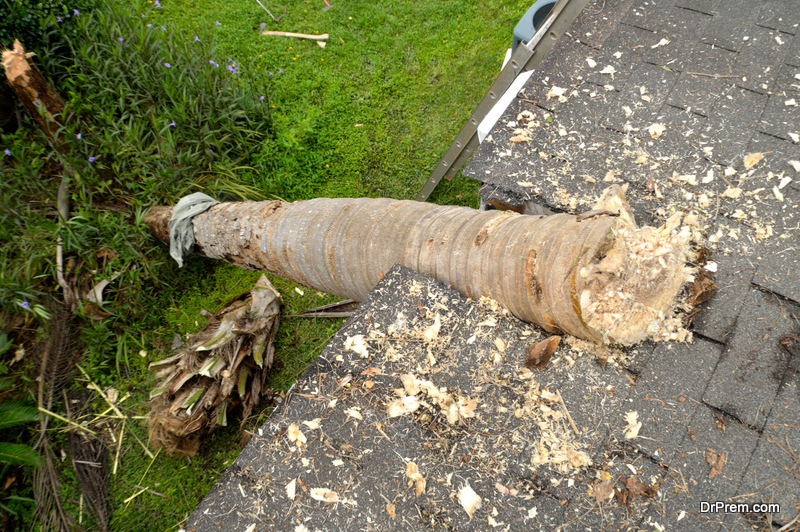Roof damage can range from minor to severe, but it’s always a good idea to detect it sooner than later. By identifying damage, you can make any necessary repairs and prevent further issues. After all, roofing issues can have many impacts. You could wind up with anything from higher utility bills to a caved-in roof!
Plus, by addressing storm damage early, you can save time and stress. It’s much easier and cheaper to request a minor roofing repair service than to have your entire roofing system replaced.
But how do you recognize signs of weather damage on the roof?
Read this guide for some of the most common indicators that your roof has issues and may need repairs.
Note On Storm Damage Repair
Before learning about the signs of weather damage, knowing what to do if you find any issues is crucial. The best option is to find an experienced roofing contractor in your area. They can perform a thorough inspection of your roof, and with their experience, they will find things the average person would miss.
Even if the storm damage is quite noticeable, you’ll still want to call a roofing contractor. They can assist you with the homeowner’s insurance process.
With their help, you’ll ensure everything is documented and that you get a quote for the insurance company.
Sign 1: Missing And Damaged Shingles Or Tiles
One of the most telling signs of a roofing problem is damaged shingles or tiles. Hail, wind, and heavy rain can impact these roofing elements, leading to cracks, chips, and more.
If you see issues with the shingle or tiles, it’s best to have them repaired immediately. Usually, this is a simple and cost-effective fix, but if there’s too much damage, you might need a roof replacement.
Sign 2: Damaged Roof Flashing
Roof flashing is thin, metal material used to direct and divert water. The flashing protects essential parts of the roof and ensures proper water drainage. Storms can sometimes damage the flashing around chimneys, skylights, and vents.
You’ll want to repair damaged flashing to prevent water damage.
Sign 3: Water Leaks
Another significant storm risk for rooftops is water. Whether you live in an area with a lot of snowfall or heavy rainstorms, you want to check for water leaks after inclement weather.
Look for water drips or discoloration on the ceilings. If you suspect a water leak, don’t wait to call a roofing professional, as this damage can quickly worsen.
Sign 4: Fallen Trees Or Other Debris
Heavy winds may cause trees or other debris to fall on your roof. You can help prevent this by trimming the trees around the home, but even still, a major storm can lift debris from far away.
If there is debris on your roof after a storm, double-check that nothing was damaged.
Sign 5: Ice Dams
Ice dams build up when there isn’t enough insulation in the attic. As the attic heats up, it warms the roof, causing snow and ice to melt. Then, as the outside temperatures cool again, the ice and snow re-freeze. This freeze and thaw cycle can cause significant accumulation on the roof and lead to extensive roofing damage.
If you notice the snow and ice building up, you’ll want to contact a roofing contractor to see about insulation upgrades.
Keeping Yourself & Your Home Safe
When checking your roof for weather damage, be extra careful. Going on the roof can be dangerous, especially in colder months. It’s better to let the professionals take over, as they have the training and equipment to assess a roof properly.
Always be safe rather than sorry!
Article Submitted By Community Writer




